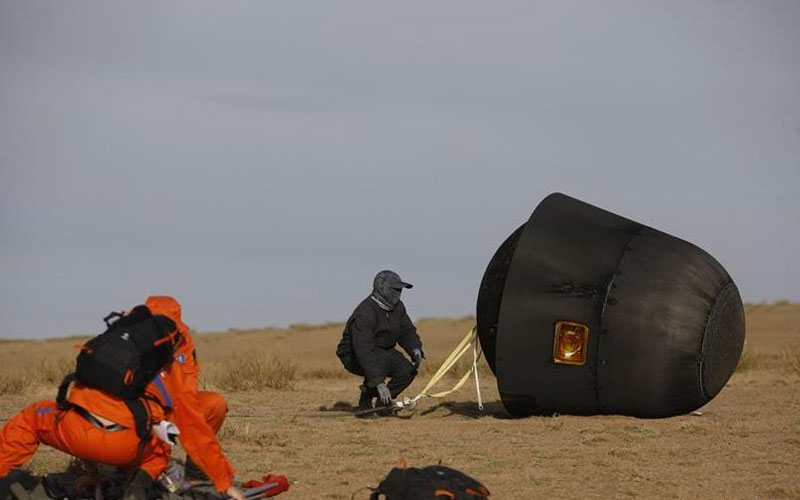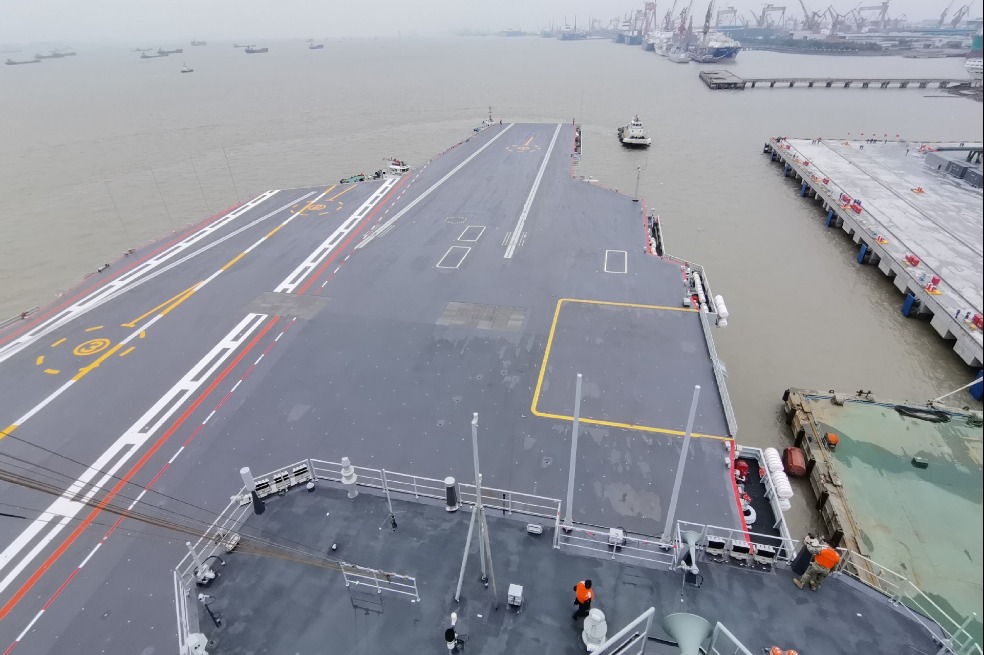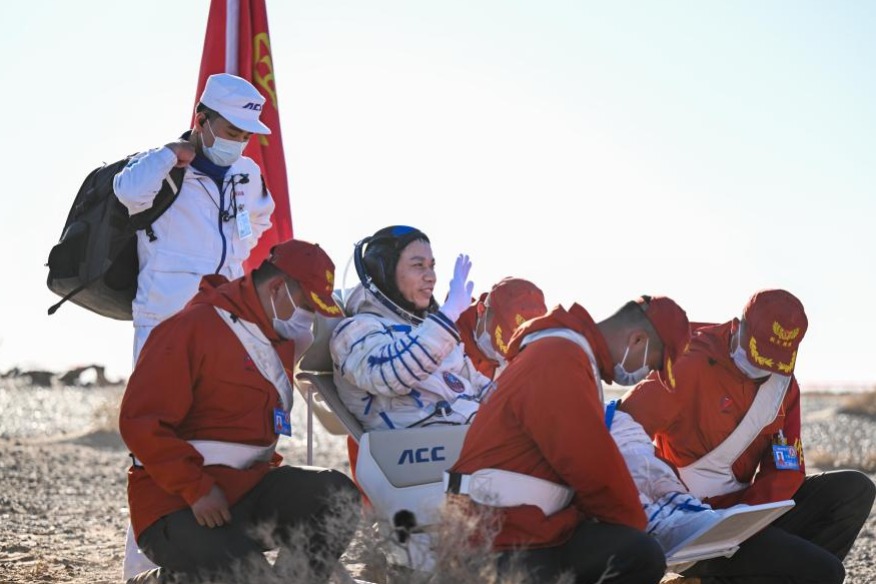China's space landing site chosen with utmost care
By Zhang Yangfei | chinadaily.com.cn | Updated: 2020-12-17 19:42

For Siziwang Banner of the Inner Mongolia autonomous region, falling spacecraft are nothing unusual.
Before the landing of Chang'e 5 at 1:59 am on Thursday, the site also welcomed back 11 Shenzhou spacecraft designed for China's manned spaceflight program, as well as 14 astronauts over the past two decades.
Siziwang Banner is located at the center of Inner Mongolia, about 80 kilometers north of Hohhot, the region's capital.
"In all the Shenzhou return missions, the landing site system at Siziwang Banner has performed very well. It is very experienced," Huang Zhicheng, an aerospace technology expert and aerodynamicist, said in an interview with Beijing News.
The choice of where to locate the landing site for spacecraft returns varies from country to country, depending largely on geographical and technical conditions. Unlike spacecraft from the US, which return on water, both China and Russia opt for land.
According to Huang, to have a safe spacecraft return, extensive technologies and support systems are required, including facilities to command, measure, control and track, as well as search teams to vacate the territory. The Siziwang Banner landing site already has a mature team and technologies.
Compared to land, sea landings have the advantage of a lower threat to populations, buildings and ecosystems. The sea can also buffer the impact of the landing.
Huang, having participated in the planning of China's manned space project, told Beijing News the country had considered sea landing but eventually abandoned the idea due to the lack of maritime search and rescue forces at that time.
Apart from being vast and a low-populated area to mitigate the danger a return would bring, a land-based landing site also requires several other conditions. Huang said a spacecraft normally has a fixed orbit when it returns and is not very likely to change the route. Therefore, the landing site should be selected as near as possible to below the orbit, which in this case is Inner Mongolia.
In addition, the ground at Siziwang Banner is hard and does not have large rivers, so the spacecraft will not land in mud or water. Its stable, dry climate with little rain all year and mostly sunny days is also a big advantage, Huang said.
























